Scientific name Bos taurus Rank Breed | ||
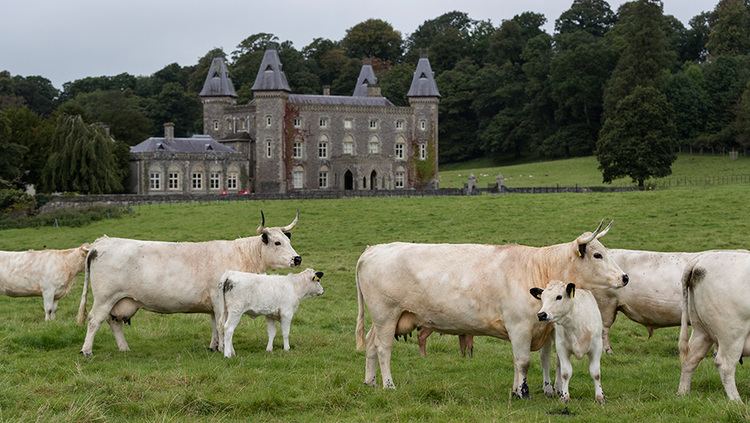 | ||
Similar British White cattle, English Longhorn, Belted Galloway, Welsh Black cattle, Chillingham cattle | ||
The White Park is a rare breed of horned cattle having ancient herds preserved in Great Britain. Two similar semi-feral populations, the Chillingham Wild Cattle in Northumbria and the Vaynol cattle from Gwynedd in North Wales, have a separate breed status. There are relatively small numbers of the White Park cattle in the United States, where they are commonly known as the Ancient White Park in order to distinguish them from the American White Park, which is a population of the British White.
Contents
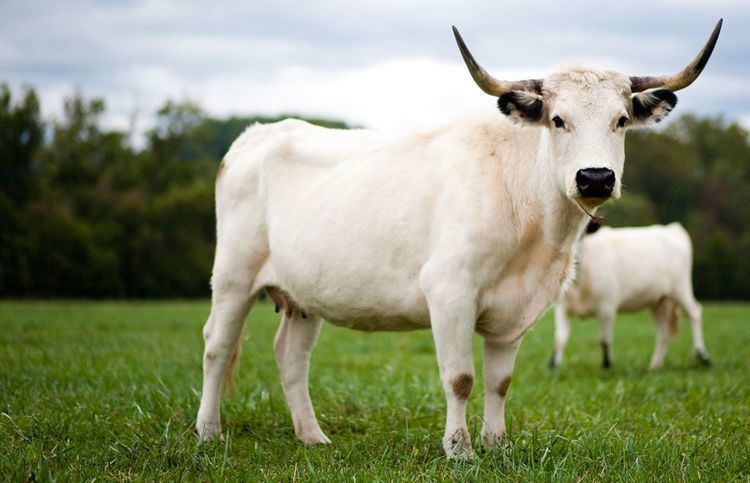
Description
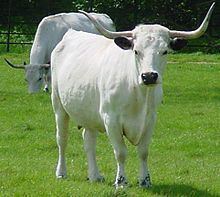
The White Park is a medium-large, long-bodied bovine. A program of linear assessment, including 200 bulls and 300 cows, has been carried out in the UK since 1994 to define its size and conformation. The weight of a mature bull varies from 800 to 1,000 kilograms (1,800 to 2,200 lb), depending on the quality of grazing. The relevant corresponding weights for adult cows are 500 to 700 kilograms (1,100 to 1,500 lb). The colour is distinctive, being porcelain white with coloured (black or red) points. The horns of the cows vary in shape, but the majority grow forwards and upwards in a graceful curve. The horns of bulls are thicker and shorter, and not so uplifted. In their native environment in Britain, White Park cattle are noted not only for their distinctive appearance, but also for their grazing behaviour, where they show a preference for coarser terrain. They are well-suited to non-intensive production and some herds are kept outside throughout the year on rough upland grazing without shelter or supplementary feed. They are docile, easy-calving, and have a long productive life. Some traits may vary a little in other countries, but the basic type is the same.
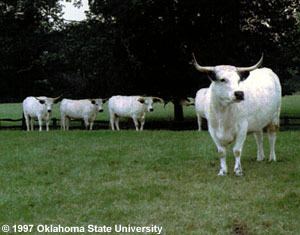
They are beef animals noted for the quality of their meat. They are capable of converting coarse herbage into high quality meat, and of gaining weight at over 1 kg per day in good conditions. Until relatively recently they were a triple-purpose breed – meat, milk and draught. The 3rd Lord Dynevor (1765–1852) kept a team of draught oxen, and the practice continued up to 1914. They were used as dairy cattle even more recently. Some cows were being milked in the Dynevor herd in 1951, but yields were moderate. Beef became the main product during the twentieth century, and gained a reputation as a textured meat, with excellent flavor and marbling, which commanded a significant premium in specialty markets. The best quality beef comes from 36-month-old animals, and fine marbling is the key to its eating quality, while the low cholesterol content adds to its attraction for the health-conscious consumers.
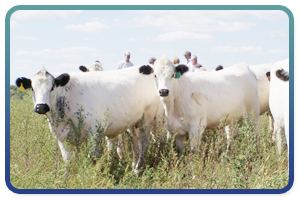
Several blood typing and DNA studies have revealed the genetic distinctness of White Park cattle The colour-pointed coat pattern also appears in other cattle breeds such as the Irish Moiled, the Blanco Orejinegro, the Berrenda, the Nguni and the Texas Longhorn. The breeds most closely related seem to be the Highland cattle and Galloway cattle of Scotland, but the White Park "is genetically far distant from all British breeds".
The Chillingham has diverged from the main White Park population and various stories have grown up around them.
History
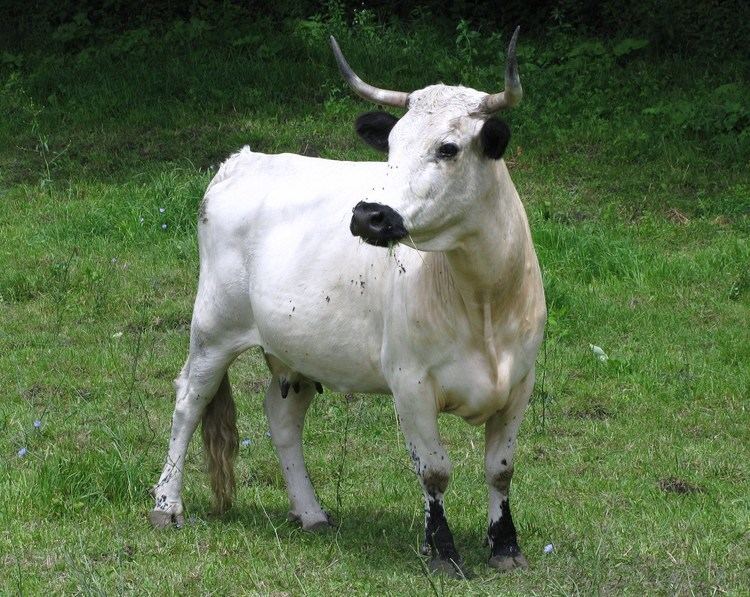
White Park cattle are an ancient breed. Two thousand years ago a type of cattle, similar to the White Park breed, were found through much of the British Isles, particularly in Ireland, Wales, northern England and Scotland. At about that time in Ireland, there are references in the Cúchulain cycle to the sacrifice at Magh Aí of three hundred white cows with colored ears. Either it was a common colour at that time or, more likely, it was a colour specially prized and maintained for ritual and ceremony. The first issue of the Royal Dublin Society Historical Studies in Irish Agriculture is a book on ancient Irish cattle breeds which states that white cattle were known in Ireland until at least the 1820s, although they became extinct in Ireland in that century. Similar references are found in Welsh history at a slightly later period. Pembroke in western Wales remained a main centre of the breed until the nineteenth century and they were driven in large numbers to the pastures of the Severn and the neighboring markets in England.
In 1225, as a result of legislation passed by Henry III, several parks were enclosed and several herds, including those at Chartley and Chillingham in England and Cadzow in Scotland, were "emparked". There were more than a dozen white Park Cattle herds in Britain in the early 19th century, but most of these were exterminated by the turn of the next century.
The Park Cattle registration program in Britain was started in 1918, but by 1946 only the Dynevor, Woburn, Whipsnade, and Cadzow herds survived as domesticated herds; the ancient herds at Vaynol (Faenol) in Wales and the above-mentioned Chillingham herd having become semi-feral. In 1973, the Rare Breeds Survival Trust was formed in Britain, and the following year the registration program was revived for the remaining British herds in the "White Park" herd book. Numbers have increased and now exceed 1,000 breeding cows in the UK.
White Park cattle have been exported to several countries. In 1921, animals were exported to Denmark, and from there to Latvia in 1935 and thence to Germany in 1972. In 1987, cattle were exported to Australia. In 1940, one or two pairs of White Park cattle from the Callow herd were exported to Canada. The Canadian-born offspring of those cattle were transferred to the Bronx Zoo but moved to the King Ranch in Texas where they remained for almost the next forty years. In USA the breed is known as Ancient White Park to avoid confusion with the hornless American White Park.
Most national populations of White Park cattle have been DNA tested to verify parentage, to confirm the provenance of products, and to enable assignment of applicant animals to breed and determine the optimum breeding program to ensure their effective conservation survival. The breeding program in the UK aims to increase the desirable characteristics of the breed while maintaining genetic diversity. Heterogeneity is low due to inbreeding through much of the twentieth century. Faygate Brace (born 1906) contributed circa 40% of the ancestry of the breed by the 1940's, and Whipsnade 281 (born 1956) repeated this pattern in the second half of the twentieth century. His grandson, Dynevor Torpedo is now the dominant influence in the breed. Two herds, Dynevor and Chartley/Woburn, have been the dominant influences throughout this time. The global population now is almost 2,000 purebred females, plus bulls and young stock.
